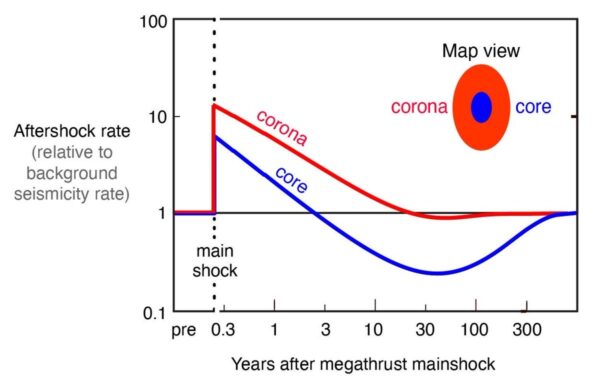Here’s a very interesting analysis of aftershock patterns in the wake of M9+ megathrust events: the aftershocks in a ‘core’ region closest to the rupture shut off within a few years of the main shock, after which seismicity might remain very low for centuries. However, within a larger ‘corona’ of stressed rocks around this core region, seismicity is boosted for decades.

One think I like about this model is how it reconciles the known history of large earthquakes on the Cascadia megathrust with its historical lack of much seismicity at all, which for some time led us to dangerously underestimate the risk it posed to the Pacific Northwest. It’s still recovering from the last rupture in 1700. Furthermore, perhaps as it starts to evolve towards rupturing again in the future, we might expect to see a bit more low-level seismicity in the ‘core’ region.
[collated from this Twitter thread]



Nice plan for content warnings on Mastodon and the Fediverse. Now you need a Mastodon/Fediverse button on this blog.